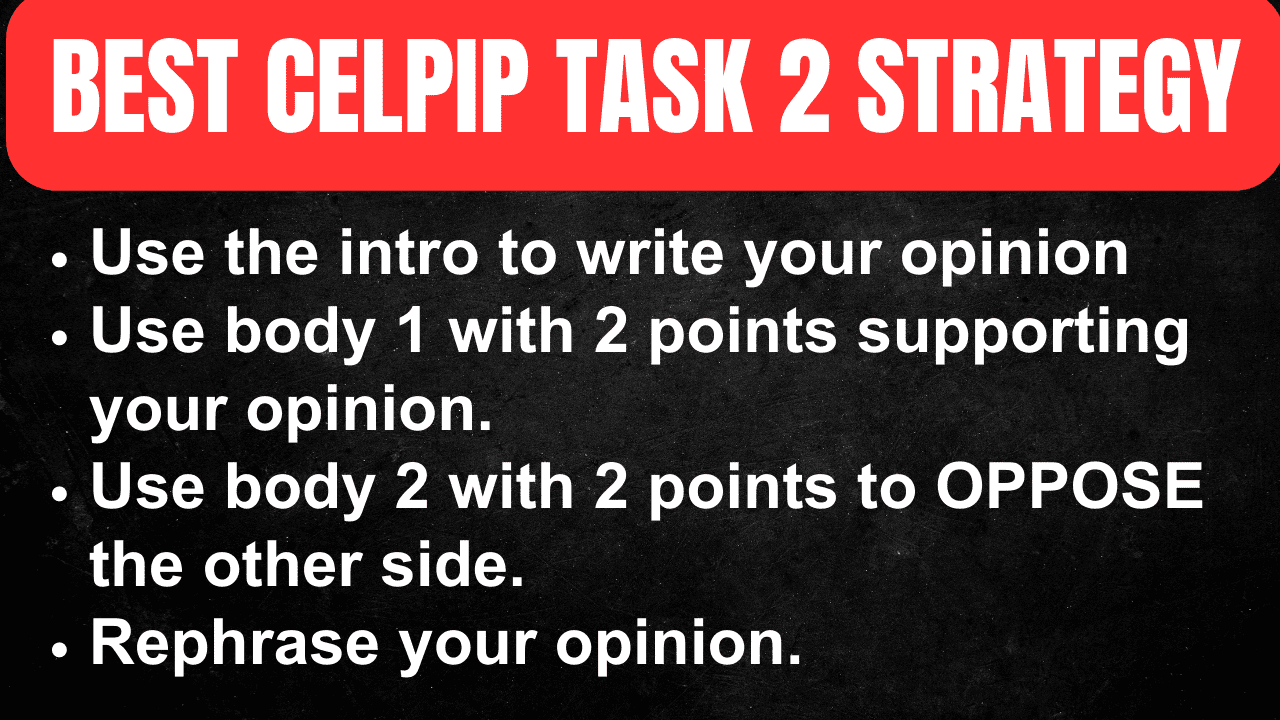CELPIP Crash Course: Writing (Everything You Need to Know!)
Greetings, everyone! This is Sean from HZad Education, and today, we’re diving into the intriguing world of CELPIP writing with this crash course. In this inaugural episode of a seven-part series, we’ll delve deep into the intricacies of this unique form of writing. If you find this information helpful, don’t forget to hit that subscribe button to stay updated with the rest of the series, covering every aspect of this exam. But before we explore whether you still need classes after this series, let’s focus on today’s topic: the essence of writing.
Starting with Brainstorming
Now, let’s embark on the journey of crafting impactful essays. When teaching students, our first lesson is always brainstorming. You can find an illustrative video on brainstorming in the provided link. In brief, the goal is to brainstorm ideas for each topic’s body paragraphs.
For example, in Task 1, if you’re discussing a complaint to a restaurant, brainstorm about describing the situation, detailing the problem, and suggesting solutions. For each bullet point, generate two points. This helps structure your thoughts and streamline your writing.
In Task 2, just think of two points (for body 1) supporting your side and two points (for body 2) opposing the other side).
Finding Material and Using Templates
Focus on brainstorming for task 1 and 2 questions, allocating 2-3 minutes per topic to simulate exam conditions. The magic happens when you notice common points across different questions, like the “jobs” theme being versatile across various topics. You can talk about “jobs” in any topic! Is it about technology? You can favor its creation and say it will create more jobs. Is it about a recreation centre being built? Once again, more people can get employed if it is built. Is it about a hobby? Good, you can later make that hobby into a job!
Additionally, certain keywords can act as effective triggers for brainstorming. Jot down words like “social,” “environmental,” “jobs/economy,” “ethics,” “politics,” “history,” “tradition,” “health,” and “globalization.” These keywords can catalyze creative thinking and foster well-rounded essays.
Structuring Your Writing
Moving on to structuring your essays, the approach for Task 1 and Task 2 varies. For Task 2, structure body 1 around two positive points about your opinion and body 2 around two negative points about the opposing side. In your introduction, highlight your chosen opinion’s reasoning, and in your conclusion, reiterate your stance. For Task 1, follow the provided template for introductions, body paragraphs, and conclusions. End your letter with an appropriate closing line. MORE ON THIS BELOW!
Next Steps: Practice and Refinement
Now that we’ve covered the essentials, it’s time to put theory into practice. Begin by practicing brainstorming for multiple topics, ensuring you adhere to the 2-3 minute time constraint. For Task 1 and Task 2, aim to complete five essays each. Once you’ve written them, set them aside; we’ll discuss reviewing and refining your work in future videos.
_____
Why do students always fail CELPIP? This course not only explains that but GUARANTEES your results or your MONEY-BACK! With 100,000 copies sold, check out why this course has internet’s best reviews (IMMEDIATE ACCESS AVAILABLE): https://hzadeducation.com/product/classes-celpip/
_______
I. CELPIP Crash Course: Writing (Task 1- Informal Writing)
A. Introduction
Informal letters are reserved for addressing individuals you share a close relationship with. This includes friends, family members, or even colleagues you consider as friends. An informal letter template begins with a friendly greeting that sets the tone for the rest of the letter. Instead of the conventional “I hope you are well,” consider starting with a more personal tone, such as “Hopefully, you and your spouse are doing well.” By utilizing more expressive language, like “doing well” instead of “fine,” you instantly stand out from the norm. Expressions like “my apologies” instead of “I’m sorry” add depth to your language and are likely to make a favorable impression.
B. Body Paragraphs: Addressing the Points
The body of an informal letter is where you cover the specific points outlined in the question. Typically, there are three bullet points that you need to address. For each bullet point, you can create a separate paragraph. However, the template doesn’t apply to body paragraphs, as the content varies based on the question. Focus on discussing each point effectively, using rich vocabulary and expressions. For instance, if you borrowed a textbook from a friend and need to apologize for not returning it sooner, use phrases like “my apologies for not being in touch” to exhibit sincerity and warmth.
C. Conclusion
As with the introduction, the conclusion of an informal letter allows you to display your genuine sentiments. A template-based approach is effective here. Phrases like “I’m hoping this letter finds you well” followed by “do get back to me whenever you get a chance” convey a sense of anticipation and eagerness for a response. Including exclamation marks in your conclusion adds an expressive touch and mimics real-life interactions.
II. CELPIP Crash Course: Writing (Task 2 – Formal Letters)
A. Introduction
Formal letters are your go-to choice when addressing acquaintances, professionals, or individuals you have a more distant relationship with. The key to formal letter writing lies in being concise and direct while maintaining a courteous tone. Avoid the generic “I hope you are well” and opt for a more decisive approach, such as “The purpose of my writing today is to inform you about.”
B. Body Paragraphs: Delving into the Points
Similar to informal letters, formal letters also consist of three bullet points that require addressing. However, a template is not applicable to body paragraphs due to the varying content based on the question. Instead, focus on using clear and formal language to discuss each point precisely and succinctly.
C. Conclusion
Formal letters necessitate a balanced blend of professionalism and courtesy in the conclusion. Employ sophisticated language and phrases that convey gratitude and a proactive stance. Depending on the scenario, you can opt for a suggestion-based conclusion, such as “I’m looking forward to seeing how my suggestions translate into prompt actions from your side.” Alternatively, for more general scenarios, phrases like “Your cooperation in this matter is greatly appreciated” demonstrate a respectful tone.
III. CELPIP Crash Course: Writing (Enhancing Vocabulary and Expression)
Both informal and formal letters offer opportunities to enhance your vocabulary and expressions. By incorporating less common phrases and vocabulary, you elevate your language proficiency. For example, instead of using basic phrases like “get this letter,” employ “please respond at your earliest convenience.” Such vocabulary showcases your ability to articulate your thoughts effectively.
In conclusion, mastering the art of writing effective letters, whether informal or formal, requires attention to detail and a balanced approach. While templates can guide you through the introductory and concluding portions, the body paragraphs demand unique content. Strive to convey warmth and familiarity in informal letters, while maintaining professionalism in formal ones. By skillfully integrating advanced vocabulary and expressions, you can elevate your writing and increase your chances of success in the CELPIP exam.
__________________
CELPIP Crash Course: Writing Task 2: Effective Strategies for Success
In this comprehensive guide, we’ll delve into the intricacies of the CELPIP Writing Task 2, which plays a significant role in determining your writing proficiency. This task presents you with two options, labeled A and B, and requires you to choose one and craft a well-structured response. Let’s explore the crucial elements, optimal word limits, and three main structures that will elevate your writing to impress examiners.
I. Understanding the Task
A. Task Overview
The CELPIP Writing Task 2 is a critical component of the exam that evaluates your ability to present arguments coherently and persuasively. You are presented with two options, A and B, and you must select one to write about.
B. Word Limit and Allowance
The prescribed word limit for your response is between 150 to 200 words. However, there’s a leeway of plus or minus 10 words, which means you can extend your response to up to 210 words. A key insider tip is that examiners often appreciate responses around the 180-word mark. This optimal length strikes a balance between conveying sufficient content and adhering to the word limit.
II. Main Structures for Task 2
A. The Ascending Order Structure
In this structure, your response focuses solely on discussing your chosen option. For example, if you opt for option A, you’ll dedicate your introduction and all your body paragraphs to presenting reasons supporting that choice. However, this approach has its shortcomings. It may be perceived as unbalanced and incomplete since you entirely neglect the other option. While this structure might be suitable for situations where you’re pressed for time, it’s essential to recognize its limitations in showcasing your comprehensive skills.
B. The Two and One Structure
In this approach, you provide reasons for your chosen option in two body paragraphs, followed by a single paragraph discussing the opposing option. This structure achieves a semblance of balance, demonstrating that you can discuss both sides of the issue. However, some examiners might find it less consistent and prefer a more equal distribution of points.

C. The Four-Point Structure (Recommended)
The most recommended structure for Task 2 entails utilizing four paragraphs: introduction, two body paragraphs for your preferred option, and one body paragraph for the opposing option. This structure maintains balance while also showcasing your ability to discuss both options coherently.
III. Implementing the Four-Point Structure
A. Introduction
Your introduction should encapsulate your opinion on the matter, setting the tone for your response. While some prefer the template “In my opinion,” others might opt for a more formal approach, such as thanking the examiner for the question. Regardless, the introduction must convey your stance clearly.
B. Supporting Your Opinion
In your first and second body paragraphs, present two distinct reasons that bolster your chosen option. These reasons should be logical and well-articulated. For instance, if you’re arguing in favor of building a shopping mall, you might explain that it would lead to job creation and enhance property values in the area.
C. Addressing the Opposing Option
Dedicate your third body paragraph to discussing the merits of the option you didn’t choose. Articulate your understanding of its advantages, while gently explaining why you lean towards your chosen option. For example, if you’re discussing the alternative of building a forest, you might highlight the potential for increased green cover and enhanced biodiversity.
D. Conclusion
Your conclusion should revisit your opinion and reiterate your stance in a succinct manner. This reinforces your initial position and provides a sense of closure to your response.
____
Check out this complete breakdown of CELPIP Writing Task 2 with this video: https://www.youtube.com/watch?v=Uky5i4M73nY
____
IV. CELPIP Crash Course: Writing (Enhancing Your Vocabulary and Expression)
Utilizing a diverse range of vocabulary and expressions is crucial for impressing examiners. For instance, instead of repetitive phrases, employ synonyms to express your ideas more effectively. Furthermore, consider employing transitional phrases such as “on the other hand,” “furthermore,” and “moreover” to enhance the flow and coherence of your response.
In conclusion, acing the CELPIP Writing Task 2 necessitates a strategic approach that showcases your ability to discuss both sides of an issue. While different structures offer varying degrees of balance, the four-point structure is the most recommended due to its equilibrium and versatility. By adhering to optimal word limits and incorporating rich vocabulary, you’ll craft a response that resonates with examiners and positions you for success in the CELPIP exam.

